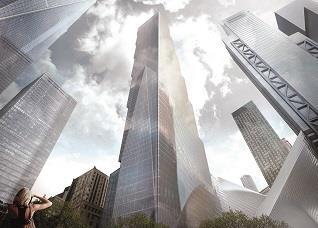New York City’s commercial real estate market is the most dynamic in memory.

There is more new construction than there has been in decades. The skyline is changing before our eyes.
Two well-known developments are driving these changes: the rebuilding of the World Trade Center, which will ultimately include more than 10m sq ft of new office space, and the Hudson Yards development on the Far West Side, which will include more than 13m sq ft of office space along with apartments, retail and cultural amenities. Many other areas of Manhattan are also alive with activity.
A key factor is the continuing evolution of the city’s economy. Its population of 8.5 million is at an all-time high, in part because of a continuing inflow of professionals representing the millennial generation.
The Pew Research Center reports that millennials now comprise the largest cohort in the US labour force, making up 34% of the total workforce. This young generation prefers living in urban centres and they are coming to New York City in droves. Companies want to tap this young, tech-savvy workforce and they know the millennial workforce does not want to live or work in the suburbs.
Despite stereotypes, these workers and companies do not necessarily prefer older, pre-war buildings. They seek locations with the amenities and environment that fit their lifestyle.
Those features tend to be located in Manhattan’s Midtown South market, a district that boasts the lowest vacancy rate in the US, leading to rapid rent increases. Its average starting rents have increased from $53.85/sq ft (£35.19/sq ft) in the first quarter of 2013 to $73.15 in the first quarter of 2015, a jump of more than 35%. This has attracted the attention of developers.
Two Midtown South areas have become hotbeds of development: the Meatpacking District and the East Side Medical Corridor.
The Meatpacking District, west of Greenwich Village, has become one of the most expensive locales of the city, rivalling those areas around Central Park that have traditionally commanded Manhattan’s highest prices.
The zone has experienced a renaissance since the repurposing of the High Line, an elevated train track originally carrying goods from Hudson River docks to nearby manufacturers. The High Line was closed about 30 years ago and has been transformed into an elevated urban park. The High Line Park has become a popular destination for tourists and has attracted residential and commercial development along its roughly one-mile length.
In May, the new building of the Whitney Museum of American Art opened at the foot of the High Line, closing its Fifth Avenue location. Two commercial office buildings are now under construction, with three more likely to break ground this year along the High Line. Each will be between 150,000 sq ft and 250,000 sq ft. They are expected to command some of the highest rents in Manhattan.
On the Far East Side around 29th Street, new office towers are emerging as a nascent East Side Medical Corridor. Serving as laboratory and research space for the life sciences sector, these buildings stand close to some of the US’s premier research and teaching hospitals. Two buildings have been completed over the past two years, with prospects for more. They are fully leased, mostly to pharmaceutical companies hiring talent from surrounding hospitals.
These are just two examples, but there are many more. From Harlem to the Lower East Side - and also beyond Manhattan into the increasingly vibrant boroughs of Brooklyn and Queens, New York City is being developed in a way we have not seen in many years.
It’s one of the most exciting times in history to be working in the commercial real estate industry in New York.
Tara Stacom is executive vice-chairman at Cushman & Wakefield






























No comments yet